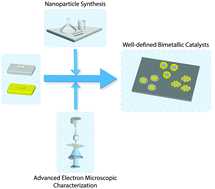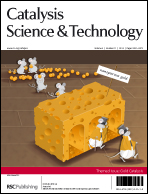This review article gives an overview of the recent developments in the synthesis strategies of supported gold-based bimetallic nanoparticle catalysts. The catalytic efficiency of these supported bimetallic nanoparticles, similar to monometallic nanoparticles, depends on their structural characteristics, but with added complexities because of the presence of the second metal. We discuss three major structural features of supported bimetallic nanoparticles, namely (a) size, (b) composition and (c) nanostructure, all of which play a crucial role in the resulting overall catalytic performances of the materials. Selected literature examples, where these three parameters have been extensively studied and controlled by changing the synthesis strategies, are analyzed and presented. A specific objective of this article is to motivate researchers to characterize these supported nanoparticles more thoroughly to investigate their structural features in detail and design based on this knowledge suitable and innovative synthesis strategies to control these properties. Because of the sheer number of examples in this field of research, this paper focuses only on gold–palladium bimetallic nanoparticles; however we are convinced that the broader scientific message could be extended to other bimetallic catalyst compositions.

You have access to this article
 Please wait while we load your content...
Something went wrong. Try again?
Please wait while we load your content...
Something went wrong. Try again?


 Please wait while we load your content...
Please wait while we load your content...